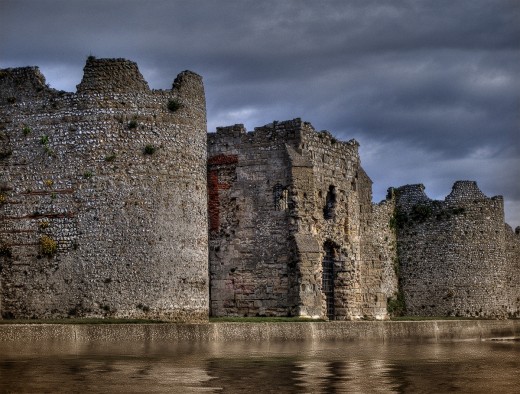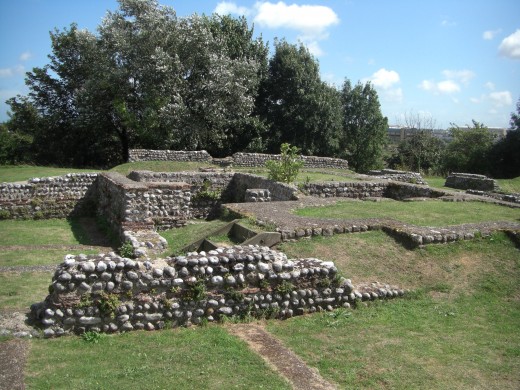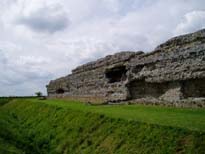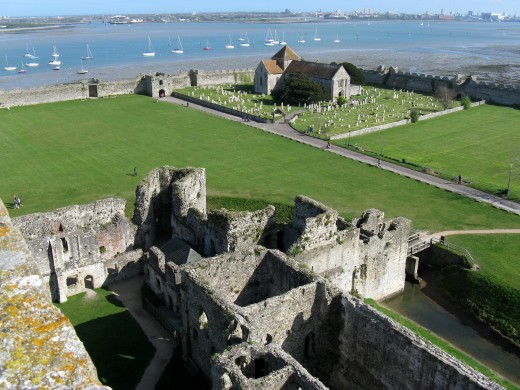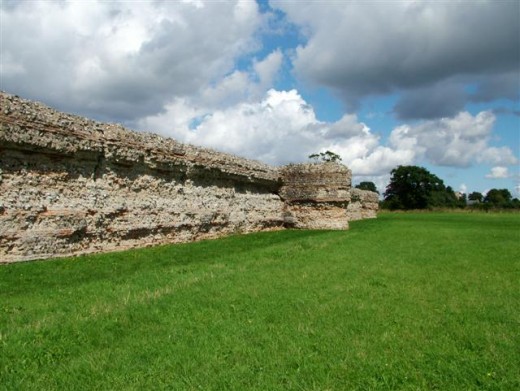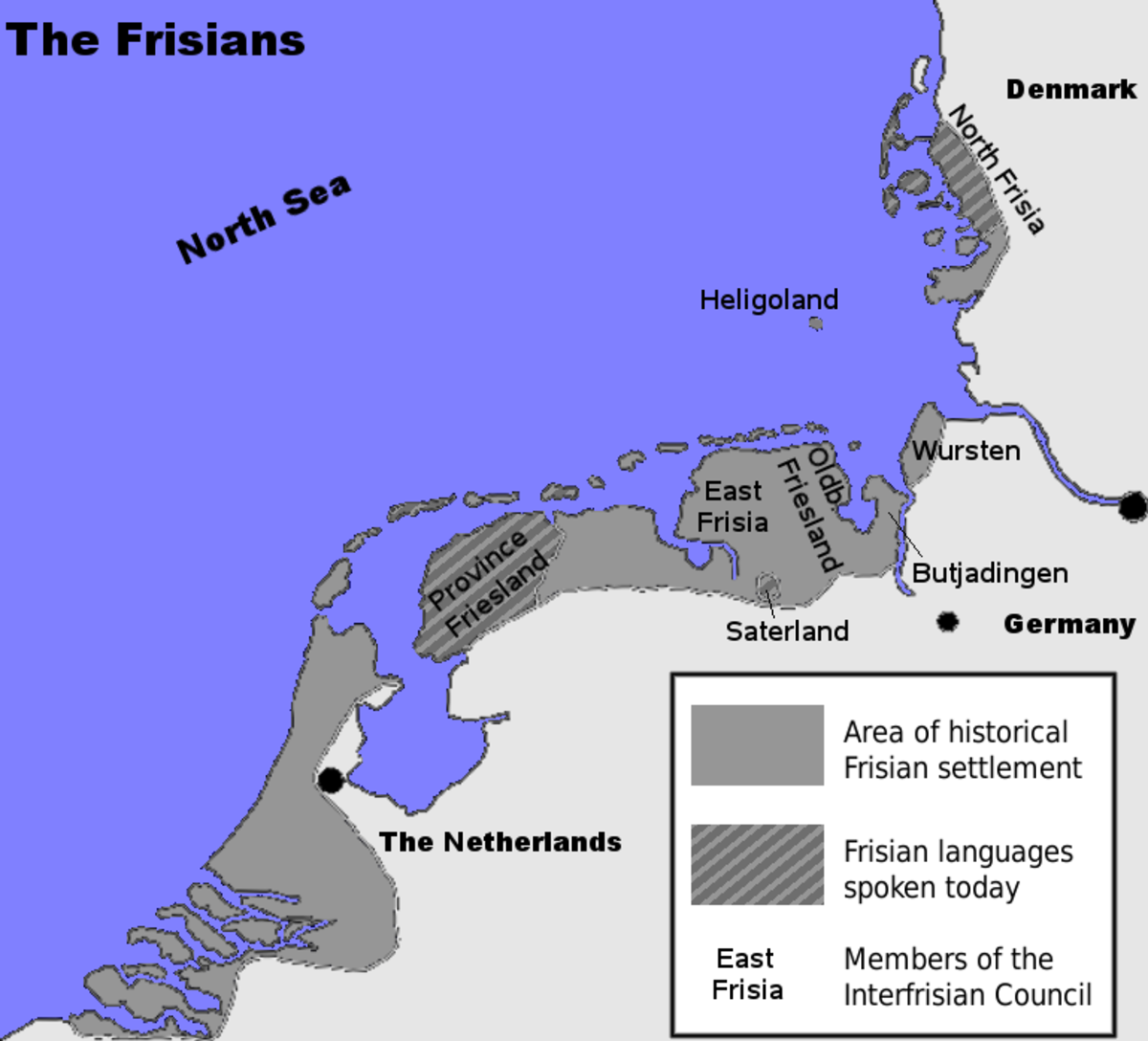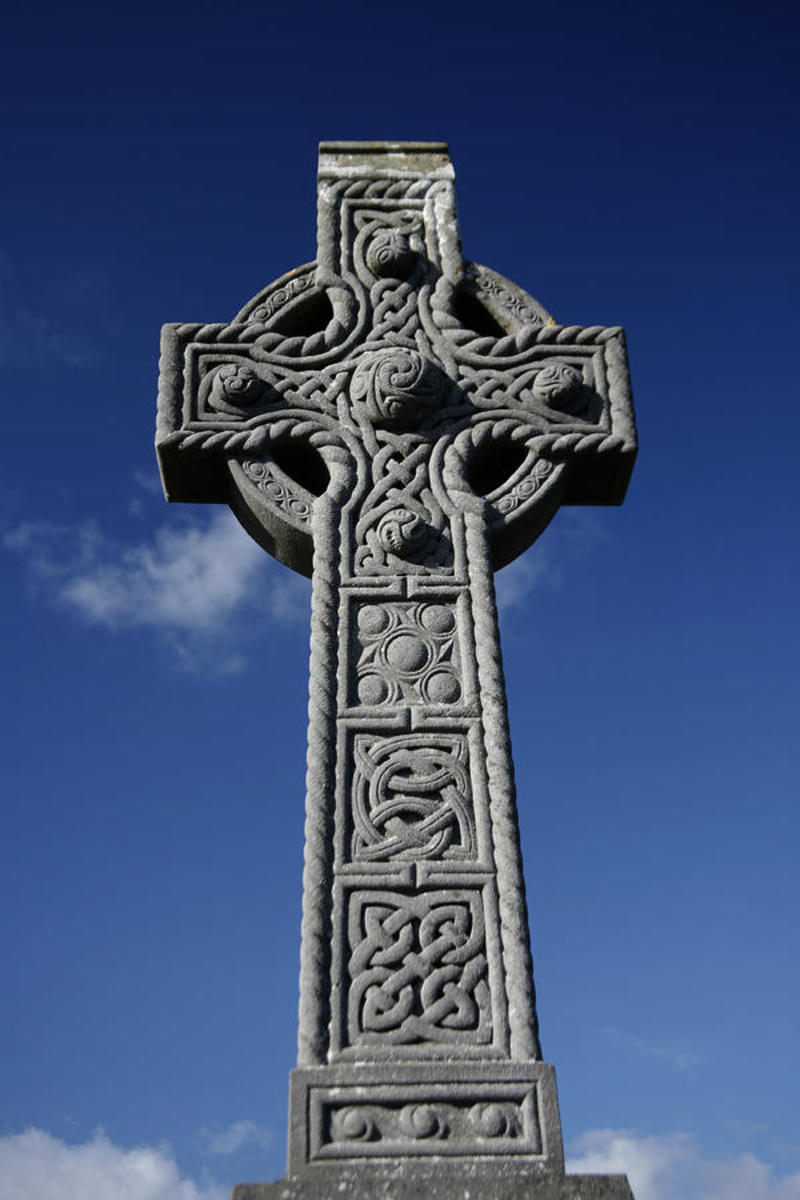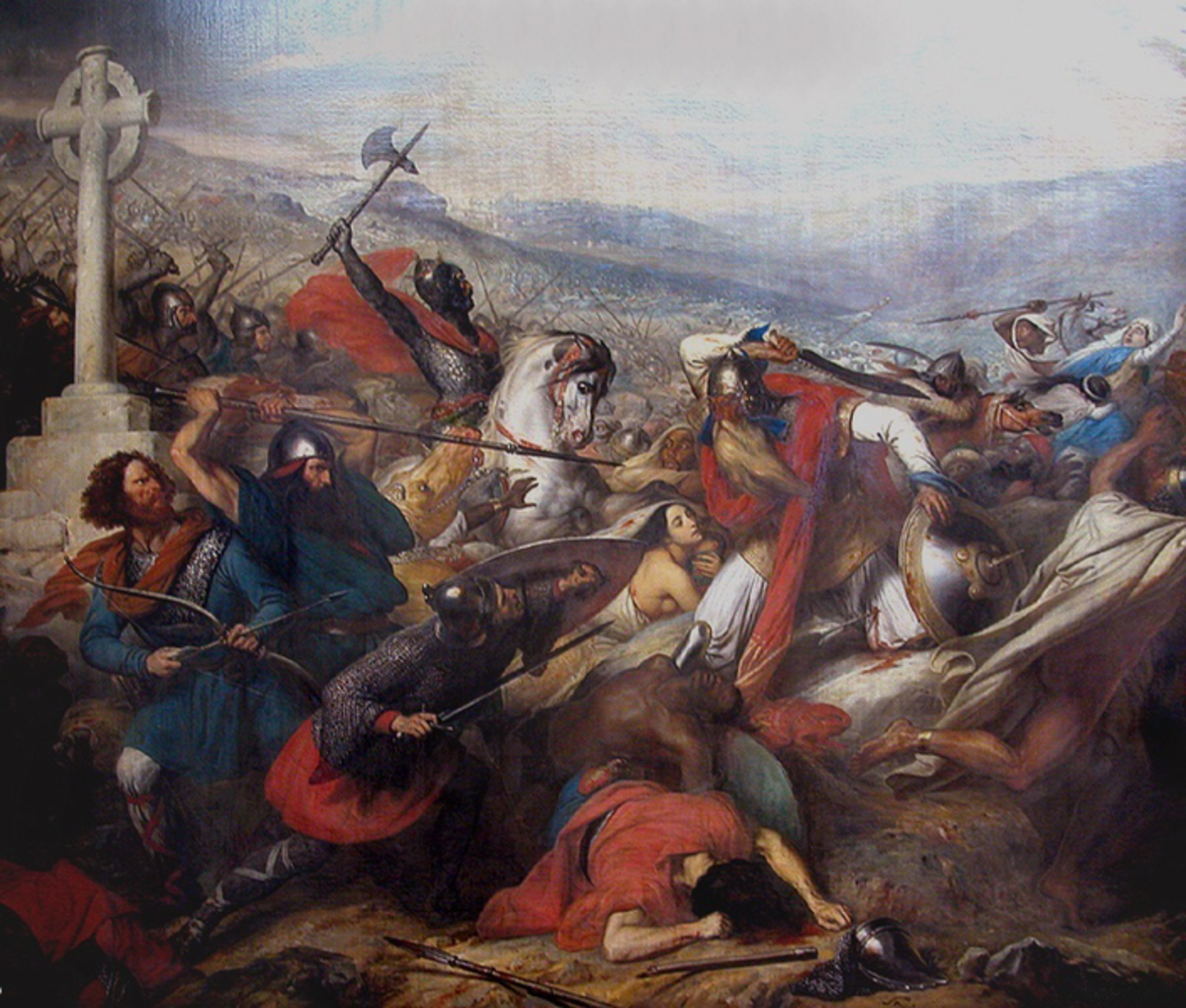The Notitia Dignitatum and the Saxon Shore Forts



Origin of the Saxon Shore
The Saxon Shore as it existed in Britannia and Gaul functioned as a network of fortifications to guard against the incursions of barbarian forces. For the first 200 years of Roman Britain (50 A.D. - 250 A.D.) the main threat resided in the north of Britain, home of the Caledonian tribes. The walls known as Hadrian's Wall and the Antonine Wall were constructed to serve as the main defense against the Caledonian tribes. They functioned as more than simply defensive walls, but the point is that the north was the hotspot for Rome's military activity in Britain. That trend began to change in the 3th century.
The mid-3rd century saw an influx in the number and frequency of sea-based invasions in the south of Britain. The Saxons, Vikings and Danes all began to move west because of the intense pressure they faced from the Huns in the east. Their sea-going prowess made southern Britain an ideal target for their invasions, especially since southern Britain did not possess a defensive network as did northern Britain. The Saxon Shore, then, was built to help guard against the growing tensions of the 3rd century.
Timeframe of the Saxon Shore's Construction
Many times the Saxon Shore is viewed as a functioning whole, a network of coastal forts. In reality, each fort was constructed separately over a period spanning almost 100 years. It was not until the last few were being built that Rome began to consider the forts as a whole. The earliest of the Saxon Shore forts were built around the 210's A.D, while many of the later forts were not begun until the 270's to 280's A.D. In addition to the forts that were purpose-built for the Saxon Shore, the fort at Dubris (modern-day Dover) was built in place of a Roman mansio that had stood since the initial Roman invasion.
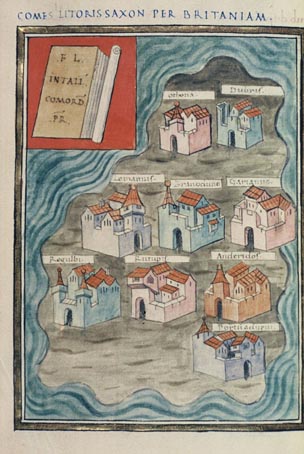
The Notitia Dignitatum
The only contemporary source for the history of the Saxon Shore can be found in a 5th century Roman document known as the Notitia Dignitatum. The Notitia is a unique document that lists most of the existing imperial offices and their functions within the Roman Empire. It mentions the Saxon Shore as a command of a Roman official known as the Comes Litoris Saxonici per Britanniam or "the Count of the Saxon Shore in Britannia."
This Count was the official granted charge of the Saxon Shore forts in Britannia, nine of which are subsequently listed in the Notitia. Undoubtedly, the Saxon Shore consisted of several forts in addition to those listed, as well as the forts that guarded the northwestern shore of Gaul.
The Forts of the Saxon Shore
Regulbium and Branodunum
Two of the earliest forts of the Saxon Shore were named Regulbium and Branodunum. Both of the early forts were built in a rectangular layout common to fortifications, a layout known as the castrum. Both forts were built in positions from which they could guard important river estuaries opening on the English Channel, prime targets for the barbarian invaders of the 3rd century.
Rutupiae
The site of the fort at Rutupiae is today known as Richborough Castle. This site was the location of a Roman fort since the first Roman landing in Britain in 43 A.D. Over the years, the fort was expanded and reinforced so that by the Saxon Shore era of the late 3rd century it was reconstructed into a substantial fort covering almost 5 acres. Many historians believe that Rutipiae was largely constructed during the reign of the usurper Carausius.


Portus Adurni
The name Portus Adurni only appears in the Notitia, but the common belief is that the Roman fort at Portchester is the fort being referenced. This fort was built sometime in the 3rd century as protection for Portchester Harbor. Portus Adurni has weathered the centuries with remarkable resiliency, and is one of a very few Roman era forts to have survived with its walls largely intact.
Portus Lemanis
The remains of the fort at Portus Lemanis have suffered ruin because of the ground on which the fort was constructed. When the fort was constructed in the 3rd century, it overlooked a harbor, as did many of the Saxon Shore forts. The harbor has filled with silt during the intervening years, and the fort is largely disappeared thanks to its foundation of clay.
Gariannonum
The Saxon Shore fort at Gariannonum was also built during the late 3rd century. This site has been the subject of some dispute as it lies directly across a river estuary from another Roman fort. The debate focuses on which fort is the one that was mentioned in the Notitia, since both forts bear similar Roman names and locations. The majority of historians seem to believe that the Roman fort of Gariannonum is synonymous with the modern-day Burgh Castle.
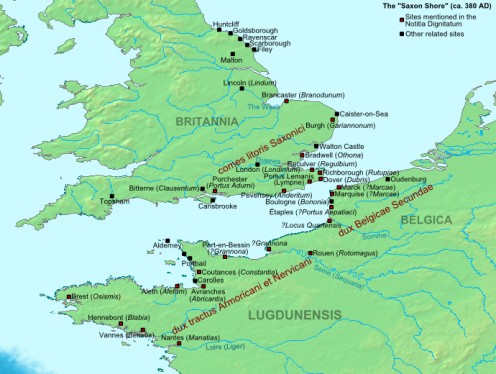
Othona
The Saxon Shore fort at Othona was another of the forts constructed during the 270's to 280's. Its location on the tip of the Dengie Peninsula made it an ideal defense for the river estuaries of two rivers, the Blackwater and the Colne. The river Colne led to the important Roman city of Camulodunum, a trade center that had become quite wealthy by the late 3rd century.
Dubris
Dubris was one of the most important forts of the Saxon Shore, as it lay closer to the mainland than any of the other forts. In addition to its eastern location, it also was built on a river estuary. The fort at Dubris functioned as a base for the Roman naval fleet in the Channel, the Classis Britannica. Due to its location, Dubris became the site of a large civilian town, functioning as the main city in cross-Channel trade between Gaul and Britain.
Anderitum
The final Saxon Shore fort mentioned in the Notitia Dignitatum was located on a peninsula when it was first built in the 3rd century. The fort at Anderitum has undergone much reconstruction and use since the Roman occupation, but some of its walls still stand today and show the Roman masonry of the original construction.
Saxon Shore Forts (North to South)
|
|---|
Branodunum (Brancaster)
|
Gariannonum (Burgh Castle)
|
Othona (Bradwell-on-Sea)
|
Regulbium (Reculver)
|
Rutupiae (Richborough)
|
Dubris (Dover Castle)
|
Portus Lemanis (Lympne)
|
Portus Adurni (Portchester Castle)
|
Anderitum (Pevensey Castle)
|
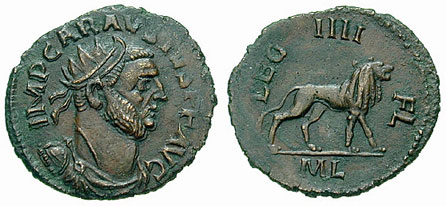
- British History
If you enjoyed this overview of the Saxon Shore in Britain, be sure to check out my blog on British History to get a better picture of the events in Roman Britain leading up to the Saxon Shore.
Possible Ties to the Carausian Revolt
As if the rising barbarian presence were not enough for Rome to deal with in the 3rd century, Rome also suffered from the presence of a usurper in Britain. Carsusius had at one time been a trusted leader within the Roman military, so trusted that he was given charge of the Classis Britannica. The emperors Maximian and Diocletian charged him with the task of clearing the Channel of its pirate infestation, but Carausius tried to play both sides against the middle.
He was eventually caught and sentenced to death for his role in allowing the pirates free reign of the Channel. He made quite a fortune by taking bribes from the Saxon pirates, and when he learned of the sentence passed in Rome, Carausius opted to secede from the empire rather than give in. With the backing of the Saxon pirates and the legions in Britain and Gaul, Carausius managed to rule the region of Gaul and Britain for a period of 7 years from 286-293 A.D.
Several historians have proposed the theory that the Saxon Shore was bolstered at the bidding of Carausius. Who wouldn't be fearful of the retaliation of Rome if they had pulled a move like Carausius had? Whether true or not, it is interesting to consider the possibility of a Roman fort system built to defend against other Romans.
In reality, it is more likely that the Saxon Shore was built as a defense or control system to help reduce the threat of the barbarian presence in the Channel. The wealthy trade towns situated on the river inlets of southern Britain drew a substantial amount of attention from the barbarian pirates and needed a stout defense. It is possible that several individual forts were commissioned by Carausius, but the bulk of them had earlier foundations, and even if they were used as defensive forts by Carausius, they were probably seized by his forces rather than built by them.

